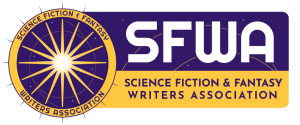by Bud Sparhawk
 After being in the writing game for nearly thirty years and selling my output on a fairly steady basis, I still find myself puzzled whenever another blank page stares at me. Ideas abound, but only a few may hold the power to become complete stories. So, after discarding a few tens of ideas that do not appear to hold the promise of being developed into anything worthwhile I expend hours considering on the remaining handful of ideas that might work.
After being in the writing game for nearly thirty years and selling my output on a fairly steady basis, I still find myself puzzled whenever another blank page stares at me. Ideas abound, but only a few may hold the power to become complete stories. So, after discarding a few tens of ideas that do not appear to hold the promise of being developed into anything worthwhile I expend hours considering on the remaining handful of ideas that might work.
For each possibility I have to question why it’s worth the time to pursue this particular idea? Is it fascinating, current, or important enough to grab a reader’s, or more importantly an editor’s attention? This is largely a subjective assessment that depends more on my emotional reaction to the possibility of creating an interesting piece than a cold, rational decision. So, after winnowing the few remaining ideas to a handful, I select one that holds the most promise and begin pantsing a few thousand words without thought to the path the story will take or where the destination might lay. Further ideas arise from this effort as I generate words, sentences, and paragraphs to support the piece.
At some point I step back and review the accumulated material to see if there might be some connecting link from which a plot can be developed. This always places me at the entrance to a labyrinth that promises many possible pathways and as many potential exits. Should I posit a character and then surround them with complications, compulsions, or contradictions? Should I think of a problem and then have my main character solve it – but no, that hasn’t worked since whenever. Perhaps I should contrive a few scenes of improbable events and populate them with seemingly intelligent, but actually naïve, actors? But what kind of events would be interesting? What sorts of characters would find, much less allow, themselves to be involved?
And it doesn’t end there: What is the central idea to which everything else must be subordinate? To answer that question is to master the plot labyrinth’s intricacies and surmount the inner challenges which present twists and turns, each of which can introduce new characters (who are, at this point just as confused about their roles as the protagonist.) Virtual characters materialize like ants at a picnic, wandering into and out of the narrative with few lines to speak and fewer descriptive details before retreating into the creative foam. Some even have the temerity to possess names!
Then there are the trap doors of non-sequiturs, grammatical snares for the unwary, and the dead ends of failing imagination. Often I crawl thousands of words into this maze only to find I’ve strayed so far from the main line of the founding idea that there is no hope of returning to the origin. Nor is there even a hint as to where the next passage might lead, let alone provide at a possible path to the exit; any exit! In frustration I sometimes force my protagonist through more thousands of words only to suddenly discover that the tissue of lies I have been creating is crap and on exposure will likely consign me into the pit of infinite rejection shame. My efforts to this point appear to be so much wasted effort.
I feel lost, hopelessly, bitterly lost, and begin to retrace my steps, hoping I can discover where I could have turned a better phrase or altered a scene. In this I bravely struggle onward, all the while wondering if any of those the paths I ignored might have led to better choices. But at this point, I’ve become so invested in the effort that I am reluctant to discard it. So I stumble on, keeping my eyes on the prize until, at last, I reach an end, any end.
And begin to edit.
•••
Bud Sparhawk is a short story writer who has sold numerous science fiction stories to ANALOG, Asimov’s, and other widely circulated magazines, appeared in several “Best of” anthologies, and has works in other print, audio, and on-line media both in the United States and overseas. He has been a three-time Nebula novella finalist. He has also written technical articles appearing in various forms. Most recently he has appeared in Asimov’s and Analog as well as Defending the Future anthologies.
He has two print collections (Sam Boone: Front to Back and Dancing with Dragons,) one mass market paperback (Vixen), and several collections and unpublished novels available as eBooks, mostly in Kindle format. Many of his earlier works are available at Fictionwise.
